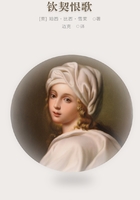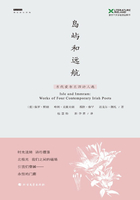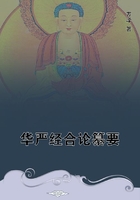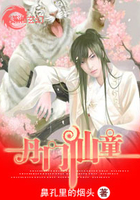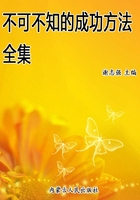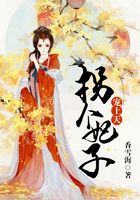[90]邹惠玲:《19世纪美国白人文学经典中的印第安形象》,载《外国文学研究》,2006年第5期,第30—35页。
[91]邹惠玲:《试论蕴涵于印第安创世传说的印第安传统信仰》,载《徐州师范大学学报》,2007年第1期,第10—14页。
[92]左桂花:《土地上的生存——解读路易斯·厄德里奇的小说〈痕迹〉》,四川大学硕士论文,2007年版。
二、英文资料
[93]Adams,David Wallace.Education That Extinguishes Civilization:Comments on Education for Extinction:American Indians and the Boarding School Experience,1875-1928.Lawrence:University Press of Kansas,1995.
[94]Allen,Paula Gunn,ed.Studies in American Indian literature:Critical Essays and Course Designs.New York:Modern Langrage Association of America,1983.
[95]Allen,Paula Gunn.Offthe Reservation:Reflections on BoundaryBusting,BorderCrossing Loose Canons.Boston:Beacon Press,1998.
[96]Allen,Paula Gunn.The Sacred Hoop:Recovering the Feminine Indian Traditions.Boston:Beacon Press,1986.
[97]Alcoff,Linda Martin,ed.Identity Politics Reconsidered.New York:Palgrave Macmillan,2006.
[98]Anderson,Mark Cronlund and Irene Maria F.Blayer,eds.Interdisciplinary and Crosscultural Narratives in North America.New York:Peter Lang,2005.
[99]Bak,Hans.“Toward a Native American‘Realism’:The Amphibius Fiction of Louise Erdrich.”Neorealism in Contemporary American Fiction.Ed.Kristiaan Versluys and Amsterdan Atlanta.GA:Rodopi,1992.145-170.
[100]Barreca,Regina.New Perspectives on Women and Comedy.Philadelphia:Gordon and Breach,1992.
[101]Barron,John.“Louise Erdrich Adds‘Burning Love’to Other Related Tales.”Mixed Media.Chicago Sun Times 26 May1996:B3.
[102]Bataille,Gretchen M.,ed.Native American Representations:First Encounter Distorted images and Literary Appropriations.Lincoln:University of Nebraska Press,2001.
[103]Bates,Elizabeth.The Emergence of Symbols:Cognition and Communication in Infancy.New York:Academic,1979.
[104]Beidler,Peter G.“Louise Erdrich.”Native American Writers of the United States.Ed.Kenneth M.Roemer.Vol.175 of the Dictionary of Literary Biography.Detroit:Gale Research,1997.84-100.
[105]Beidler,Peter G.and Gay Barton.AReader's Guide to the Novels of Louise Erdrich.Columbia:University of Missouri Press,2006.
[106]Berkhofer,Robert F.The White Man's Indian:Images of the American Indian from Columbus to the Present.1978.New York:Vintage,1979.
[107]Bhabha,Homi.The Location of Culture.London:Routledge,1994.
[108]Bird,Gloria.“Searching for Evidence of Colonialism at Work:A Reading of Louise Erdrich's Tracks.”Wicazo SAReview 8.2(1992):40-47.
[109]Blazek,William and Michael K Glenday,eds.American Mythologies:Essays on Contemporary literature.Liverpool:Liverpool University Press,2005.
[110]Bookchin,Murray.The Modern Crisis.Qubec:Black Rose Books,1987.
[111]Bookchin,Remaking Society.Qubec:Black Rose Books,1989.
[112]Bookchin,The Ecology of Freedom:The Emergence and Dissolution of Hierarchy.Oakland:AK Press,2005.
[113]Bookchin,Environmental Philosophy.Ed.Michael E.Zimmerman.New Jersey:Prentic Hall,1993.
[114]Booth,Wayne C.The Company We Keep:An Ethics of Fiction.Berkeley:U of California P,1988.
[115]Bowers,Sharon Manybeads.“Louise Erdrich as Nanapush.”New Perspectives on Women and Comedy.Ed.R egina Barreca.Philadelphia:Gordon&Breach,1992.135-41.
[116]Brogan,Kathleen.“Haunted by History:Louise Erdrich's Tracks.”Prospects 21(1996):169-93.
[117]Butler,Judith.Gender Trouble:Feminism and the Subversion of Identity.New York:Routledge,1990.
[118]Butler,Bodies that Matter:On the Discursive Limits of Sex.New York:Routledge,1993.
[119]Carr,Susan.“The Turtle Mountain/Yoknapatawpha Connection.”The Bulletin of the West Virginia Association of College English Teachers ns 16(1994):18-25.
[120]Castillo,Susan Perez.“Women Aging into Power:FictionalRepresentations of Power and Authority in Louise Erdrich's Female Characters.”Studies in American Indian Literature 8.4(1996):13-20.
[121]Catt,Catherine M.“Ancient Myth in Modern America:The Trickster in the Fiction of Louise Erdrich.”Platte Valley Review19.1(Winter 1991):71-81.
[122]Chavkin,Allan,ed.The Chippewa Landscape of Louise Erdrich.Tuscaloosa:The University of Alabama Press,1999.
[123]Chavkin,Allan and Nancy Feyl Chavkin,eds.Conversations with Louise Erdrich and Michael Dorris.Jackson:University Press of Mississippi,1994.
[124]Clark,John.“Introduction of Social Ecology.”Environmental Philosophy.Ed,Michael E.Zimmerman.New Jersey:Prentic Hall,1993.
[125]Cox,Karen Castellucci.“Magic and Memory in the Contemporary Story Cycle:Gloria Naylor and Louise Erdrich.”College English 60(1998).170.
[126]Downes,Margaret J.“Narrativity,Myth and Metaphor:Louise Erdrich and Raymond Carver Talk About Love.”MELUS 21.2(1996):49-61.
[127]Elliott,Emory.Columbia Literary History of the United States.New York:Columbia University Press,1988.
[128]Erdrich,Louise.TheAntelope Wife.New York:Perennial,1988.
[129]Erdrich,The Beet Queen.New York:Harper Perennial,1986.
[130]Erdrich,The Bingo Palace.New York:Harper Perennial,1994
[131]Erdrich,Four Souls.New York:Harper Perennial,2004.
[132]Erdrich,The Last Report on the Miracles at Little No Horse.New York:Harper Perennial,2001.
[133]Erdrich,The Master Butchers Singing Club.New York:Perennial,2003.
[134]Erdrich,Love Medicine.New York:Harper Perennial,1993.
[135]Erdrich,The Painted Drum.New York:Harper Collins Publishers,2005.
[136]Erdrich,The Plague of Doves.New York:Harper Collins Publishers,2008.
[137]Erdrich,Tales of Burning Love.New York:Perennial,1988.
[138]Erdrich,Tracks.New York:Perennial,1988.
[139]Erdrich,The Blue Jay's Dance:ABirth Year.New York:HarperCollins,1995.
[140]Erdrich,The Birchbark House.New York:Hyperion Books for Children,1999.
[141]Erdrich,Jacklight.New York:Henry Holt and Company,1984.
[142]Erdrich,“Where I ought to Be:A writer's Sense of Place.”New York Times Book Review 28 July 1985:1,23-24.
[143]Erdrich,Louise,and Michael Dorris.The Crown of Columbus.New York:HarperCollins,1991.
[144]Friedman,Susan Stanford.“Identity Politics,Syncretism,Catholicism,and Anishinabe Religion in Louise Erdrich's Tracks.”Religion and Literature 26(1994):107-33.
[145]Forster,E.M.Aspects of the Novel.New York:HarvestHarcourt Brace,1927.
[146]Gleason,William.“‘Her Laugh an Ace’:The Function of Humor in Louise Erdrich's Love Medicine.”American Indian Cultural and Research Journal 11.3(1987):51-73.
[147]Green,Rayna,ed.That's What She Said:Contemporary Poetry and Fiction by Native American Women.Bloomington:Indiana UP,1984.
[148]Hessler,Michelle R.“Catholic Nuns and Ojibwa Shamans:Pauline and Fleur in Louise Erdrich's Tracks.”Wicaso SA Review 11.1(1995):40-45.
[149]Hirschfelder,Arlene and Paulette Molin.The Encyclopedia of Native American Religions.Oxford:Facts On File,1992.
[150]Holt,Debra C.“Transformationand Continuance:NativeAmerican Tradition in the Novels of Louise Erdrich.”Entering the90s:The North American Experience.Ed.Thomas E.Schirer.Sault Ste.Marie:Lake Superior State UP,1991.149-61.
[151]Hornung,Alfred.“Ethnic Fiction and Survival Ethics:Toni Morrison,Louise Erdrich,David H.Hwang.”Ethics and Aesthetics:The Moral Turn of Postmodernism.Ed.Gerhard Hoffmann.Heidelberg:Winter,1996.209-20.
[152]Howard,Jane.“Louise Erdrich:A Dartmouth Chippewa Writes a Great Native American Novel.”Life,April 18,1985.
[153]Jacobs,Connie A.The Novels of Louise Erdrich:Stories of Her People.New York:Peter Lang,2001.
[154]Jahner,Elaine.“ACritical Approachto American Indian Literature.”Studies in American Indian Literature.Ed.Paula Gunn Allen.New York:MLA,1983.211-24.
[155]Johnston,Basil.Ojibway Ceremonies.Lincoln:U of Nebraska P,1982.
[156]Kelly,Joseph M.“American Indian Gaming Law.”The New Law Journal 26 November 1993:1672.
[157]Kidwell,Clara Sue.“Indian Women as Cultural Mediators.”Ethnohistory 39.2(1992):97-107.
[158]Krupat,Arnold.TheVoice in the Margin:Native American Literature and the Canon.Berkeley:U of California P,1989.
[159]Larson,Sidner.“The Fragmentation of a Tribal people in Louise Erdrich's Tracks.”American Indian Culture and Research Journal17.2(1993):1-13.
[160]Lincoln,Kenneth.Native American Renaissance.Berkeley:U of California P,1983.
[161]Lincoln,“‘Bring Her Home’:Louise Erdrich.”Indi'n Humor:Bicultural Play in Native America.New York:Oxford UP,1993.205-53.
[162]Magalaner,Marvin.“LouiseErdrich:OfCars,Time,andthe River.”American Women Writing Fiction:Memory,Identity,Family,Space.Ed.Mickey Pearlman.Lexington:UP of Kentucky,1989.95-112.
[163]MaristuenRodakowski,Julie.“The Turtle Mountain Reservation in North Dakota:Its History as Depicted in Louise Erdrich's Love Medicine and The Beet Queen.”American Indian Culture and Research Journal 12.3(1998):33-48.
[164]MeKenzie,James.“Lipsha's Good Road Home:The Revival of Chippewa Culture in Love Medicine.”American Indian Culture and Research Journal 10.3(1986):53-63.
[165]Mengelkoch,Louise.“Rejectionand Renewal:The Theme of Alienation in the Writings of Five Mixedblood Word Warriors.”Entering the 90s:The North American Experience.Ed.Thomas E.Schirer.Sault Ste.Marie:Lake Superior State UP,1991.134-48.
[166]Mitchell,David.“ABridge to the Past:Cultural Hegemony and the Native American Past in Louise Erdrich's Love Medicine.”Entering the 90s:The North American Experience.Ed.Thomas E.Schirer.Sault Ste.Marie:Lake Superior State UP,1991.162-70.
[167]Murray,Stanley N.“The Turtle Mountain Chippewa,1882-1905.”North Dakota History 51.1(1984):14-37.
[168]NelsonBorn,Katherine A.“Trace of a Woman:Narrative Voice and Decentered Power in the Fiction of Toni Morrison,Margaret Atwood,and Louise Erdrich.”LIT:Literature Interpretation Theory 7.1(1996):1-12.
[169]Narins,Brigham.“Louise Erdrich.”Smoke Rising:The Native North American Literary Companion.Ed.Janet Witalec.Detroit:Visible Ink,1995.153-55.
[170]Nash,Gary B.Red,White,and Black:The People of Early North America.Los Angeles:University of Chicago Press,2006.238.
[171]Orban,Maria and Alan Velie.“Religion and Gender in The Last Report on the Miracles at Little No Horse.”Native American Studies 17:2(2003):27-33.
[172]Owens,Louis.Other Destinies:Understanding the American Indian Novel.Norman:U of Oklahoma P,1992.
[173]Peterson,Nancy J.“History,Postmodernism,and Louise Erdrich's Tracks.”PMLA 109.5(1994):982-94.
[174]Purdy,John.“Building Bridges:Crossing the Waters to a Love Medicine.”Teaching American Ethnic Literatures.Ed.John R.Maitino and David R.Peck.Albuquerque:U of New Mexico P,1996.83-102.
[175]Prucha,Francis Paul.Ed.Documents of the United States Indian Policy.Third Edition.Lincoln and London:University of Nebraska,2000.
[176]Prucha,TheGreat Father:TheUnited States Government andthe American Indians.Lincoln and London:University of Nebraska Press,1984.1044.
[177]Radin,Paul.The Trickster:AStudy in American Indian Mythology.New York:Schocken Books,1972.
[178]Reid,E.Shelley.“The Stories We Tell:Louise Erdrich's Identity Narratives.”MELUS 25.3/4(2000):65-86.
[179]Rogers,Mary Black.Clothed-in-Fur and Other Tales:An Introduction to an Ojibwa World View.Lanham,MD:University Press of America,1982.
[180]Ruppert,James.“Meditation and Multiple Narrative in Contemporary Native American Fiction.”Texas Studies in Literature and Language 28.2(1986):209-25.
[181]Ruppert,“Celebrating Culture:Love Medicine.”Louise Erdrich's Love Medicine:A Casebook.Ed.Hertha D.Sweet Wong.New York:Oxford University Press,2000.67-84.
[182]Salyer,Gregory.“Gambling with Ghosts:Native American Literature and Postmodernism.”In Good Company:Essays in Honor of Robert Deweiler.Ed.David Jasper and Mark Ledbetter.Atlanta:Scholars,1994.167-81.
[183]Sanders,Karla.“Healing Narratives:Negotiating Cultural Subjectivities in Louise Erdrich's Magic Realism.”Diss.Pennsylvania State U,1996.
[184]Sanders,“AHealthy Balance:Religion,Identity,andCommunity in Louise Erdrich's Love medicine”.MELUS 23.3(1998):129-55.
[185]Sands,Kathleen M.“Louise Erdrich's Love Medicine.”Studies in American Indian Literatures 9.1(1985):12-24.
[186]Sarris,Greg,Connie A.Jacobs and James R.Giles,ed.Approaches to Teaching the Works of Louise Erdrich.New York:The Modern Language Association of America,2004.
[187]Sawhney,Brajesh,ed.Studies in the Literary Achievement of Louise Erdrich,Native American Writers:Fifteen Critical Essays.New York:Edwin Mellen Press.2009.
[188]Scheneider,lissa.“Love Medicine:A Metaphor for Forgiveness.”SAIL 4.1(1992):1-13.
[189]Schultz,Lydia A.“Fragments and Ojibwe Stories:Narrative Strategies in Louise Erdrich's Love Medicine.”College Literature18.3(1991):80-95.
[190]Sergi,Jennifer.“Storytelling:Tradition and Preservation in Louise Erdrich's Tracks.”World Literature Today 66(1995):279-82.
[191]Secco,Anna.“The Search for Origins through Storytelling in Native American Literature:Momaday,Silko,Erdrich.”RSA Journal:Rivista di Studi Nord Americani 3(1992):59-71.
[192]Silberman,Robert.“Opening the Text:Love Medicine and the Return ofthe Native American Woman.”Narrative Chance:Postmodern Discourse on Native American Indian Literatures.Ed.Gerald Vizenor.Albuquerque:U of New Mexico P,1989.101-20.
[193]Slack,John S.“The Comic Savior:The Dominance of the Trickster in Louise Erdrich's Love Medicine.”North Dakota Quarterly61(1993):118-29.
[194]Sloboda,Nicholas.“Beyond the Iconic Subject:ReVisioning Louise Erdrich's Tracks.”Studies in American Indian Literatures 8.3(1996):63-79.
[195]Smith,Jeanne Rosier.“Transpersonal Selfhood:The Boundaries of Identity in Louise Erdrich's Love Medicine.”Studies in American Indian Literatures 3.4(1991):13-26.
[196]Smith,Writing Tricksters:Mythic Gambols in American Ethnic Literature.Berkeley:University of California Press,1997.
[197]Stripes,James D.“The Problem(s)of(Anishinaabe)History in the Fiction of Louise Erdrich:Voices and Contexts.”Wicazo Sa Review 7.2(1991):26-33.
[198]Strickland,R.“Genocideat-Law:An Historic and Contemporary View of the Native American Experience”. University Kansas Law Review. Vol.34,No.713.1986.716.
[199]Tharp,Julie.“Women's Community and Survival in the Novels of Louise Erdrich.”Communication and Women's Friendship:Parallels and Intersections in Literature and Life.Eds.Janet Doubler Ward and JoAnna Stephens Mink.Bowling Green:Bowling Green State UP,1993.165-80.
[200]Treuer,David.Native American Fiction.Minnesota:Graywolf Press,2006.
[201]TuSmith,Bonnie.All My Relatives:Community in Contemporary Ethnic American Literatures.Ann Arbor:U of Michigan P,1993.
[202]Van Dyke,Annette.“Questions of the Spirit:Bloodlines in Louise Erdrich's Chippewa Landscape.”Studies in American Indian Literature 4.1(1992):15-27.
[203]Vecsey,Christopher.TraditionalOjibwa Religion and Its Historical Changes.Philadelphia:American Philosophical Society,1983.
[204]Velie,Alan.“The Trickster Novel.”Ed.Gerald Vizenor.Narrative Chance.Norman:University of Oklahoma Press,1993.
[205]Velie,American Indian Literature:An Anthology.Norman:University of Oklahoma Press,1991.
[206]Vizenor,Gerald.The People Named the Chippewa:Narrative Histories.Minneapolis:U of Minnesota P,1984.
[207]Vizenor,Manifest Manners:Narratives on Postindian Warriors of Survivance.Lincoln:U of Nebraska P,1994.
[208]Vizenor,“Nanabozho and the Gambler.”Native American Literature:An Anthology.Ed.Lawana Trout.Chicago:NTC/Contemporary,1999.162-65.
[209]Walsh,Dennis.“Catholicism in Louise Erdrich's Love Medicine and Tracks.”American Indian Culture and Research Journal 25(2001):107-27.
[210]Whitt,Laurie Anne.“Cultural Imperialism and the Marketing of Native America.”Contemporary Native American Cultural Issues.Ed.Duane Champagne.Walnut Creek,CA:AltaMira P,1999.169-92.
[211]Wilentz,Gay Alden.Healing Narratives:Women Writers Curing Cultural Diseases.New Brunswick,N.J.:Rutgers University Press,2000.
[212]Wong,Hertha D.Sweet.“AdoptiveMothers and Thrown-Away Children in the Novels of Louise Erdrich.”Narrating Mothers:Theorizing Maternal Subjectivities.Ed.Brenda O.Daly and Maureen T.Reddy.Knoxville:U of Tennessee P,1991.174-92.
[213]Wong,“Louise Erdrich's Love Medicine:Narrative Communities and the Short Story Sequence.”Modern American Short Story Sequences:Composite Fictions and Fictive Communities.Ed.J.Gerald Kennedy.New York:Cambridge University Press,1995.170-93.
[214]Wong,ed.Louise Erdrich's Love Medicine:A Casebook.New York:Oxford University Press,2000.
[215]Woodward,Pauline Groetz.“New Tribal Forms:Community in Louise Erdrich's Fiction.”Ph.D.Diss.Tufts University,1991.
[216]Wong,“Chancein Louise Erdrich's The Beet Queen:New Ways to Find a Family.”ARIL 26.2(1995):109-27.

